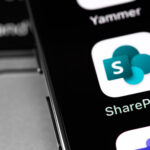The traditional model of B2B digital lead generation puts a company’s website at the center of the buyer journey. A company creates high-value content, houses it on its website and promotes it across channels. The goal is to use this content to drive users to the company’s website, entice them to explore the company’s products and services and (hopefully) hand over contact information for lead nurturing or, better yet, reach out asking for a demo or conversation.
The best websites encourage “stickiness” through attractive visual design, smart UX, strong calls to action, and strategically crafted and seamlessly connected content (my colleague Wayne Kaufmanschmidt has written at length about the keys to building great websites). The idea is to lead users to a website from various channels and then keep them there so they explore a company’s products and services via engaging content (from product demos to case studies to white papers).
But the website is no longer the undisputed champion of B2B customer engagement. There are three big issues that promise to upend this traditional digital buyer journey:
1. AI and the end of SEO
It might seem hyperbolic to declare “the end of SEO.” After all, organic search will remain a key avenue through which brands build visibility and secure prospect interest. However, there is a significant shift underway in the web economy. When more responses to searches are fully baked AI-generated responses, it is inevitable that less traffic will flow through to source websites. Even platforms like Perplexity that do a great job highlighting source articles produce comprehensive responses that, for most users, will be sufficient. (This of course leads into a discussion that’s beyond the scope of this article around how to ensure a brand appears prominently in generative AI outputs. For example, how do you ensure your explainer article is one of the sources Perplexity cites for a relevant search? How do you become the top recommendation ChatGPT provides in response to a user question? It’s a complex and still murky topic. But suffice to say that traditional brand-building through consistent and smart marketing and PR will go a long way). The bottom line is that the rise of AI will likely result in less organic search traffic to company websites as users find the information they seek within increasingly AI-dominated search platforms.
While social media sites keep their algorithms mostly shrouded in mystery, it is only natural that these platforms want to keep users on their platforms. Elon Musk has been fairly explicit about X’s suppression of posts with links to external sites. And marketers have experimented with and proven out LinkedIn’s prioritization of content that keeps users on the platform. While there’s a self-serving aspect of this, this approach also meshes with these platforms’ stated goals to provide users with useful information and foster dialogue. This continued push to keep users on social media platforms further shifts the spotlight away from the website as the hub of buyer activity.
3. Endless (AI-generated) content
It’s inevitable that LinkedIn (and other platforms) will be flooded with AI-generated content. AI models are improving rapidly, and the opportunity to use AI as a high-volume content engine is understandably enticing to marketers. This poses challenges for brands and individuals seeking share of voice in an increasingly cluttered information ecosystem.
Amid these challenges, there are opportunities. Let’s focus on LinkedIn, given its relevance for B2B business audiences. Here are a couple ways brands can adapt to these shifts and build awareness and visibility.
Embrace a platform-focused approach: Brands must move away from putting web traffic on a pedestal. Instead, they should recognize the multifaceted nature of branding in the modern digital space. So, by all means continue to build great websites and seek to drive users there (sponsored campaigns continue to be a great way to do this on LinkedIn). But build an organic LinkedIn strategy that can stand alone – one that’s designed to maximize visibility and engagement on LinkedIn instead of using LinkedIn as primarily a feeder to the website. By freeing itself of an obsession with web data and focusing instead on maximizing engagement on LinkedIn, a brand will uncover new creative opportunities with its written content, graphics and video content on the platform.
Be authentic and interesting: Marketers can’t bury their heads in the sand and convince themselves that human-generated content will always be superior to AI-generated content. With AI models improving constantly, we will see increasingly high-quality AI outputs. How marketers can effectively blend human ingenuity with AI outputs to create great content is a topic for another article. But, when it comes to breaking through large amounts of AI-generated content on LinkedIn, brands and individuals must at a minimum find and then be true to their authentic voice, consistent in their output, and committed to sharing interesting content that sparks thought and conversation.
No matter the topic, interesting headlines, catchy leads, tight writing and compelling subject-matter (in other words, the fundamentals of good journalism) will engage readers. Brands and individuals on LinkedIn should strive to share differentiated (and sometimes even contrarian) perspectives, prompt a dialogue by sharing new ideas and asking for advice and input, and leverage all content formats LinkedIn supports (e.g., articles, in-feed posts, videos, etc.) to discover what works best for their audiences.
LinkedIn’s prioritization of high-quality and interesting content – and promotion of that content beyond the short time frame after it was posted – opens up opportunities for creative, sharp and prolific individuals and brands. There’s great content on LinkedIn. But there’s also large amounts of mediocre and generic content that offers little value. Smart brands can stand out.
Embrace LinkedIn as a hub for B2B engagement
In this fast-moving space, B2B brands must remain agile in their approach. But, given AI-driven shifts in the web economy and LinkedIn’s current moves to reward high-quality, zero-click content, brands should embrace LinkedIn as a hub for engagement with prospects and customers. Its importance will grow as AI continues to upend the traditional digital buyer journey.
Check out our LinkedIn page for more information or connect with the author here.








